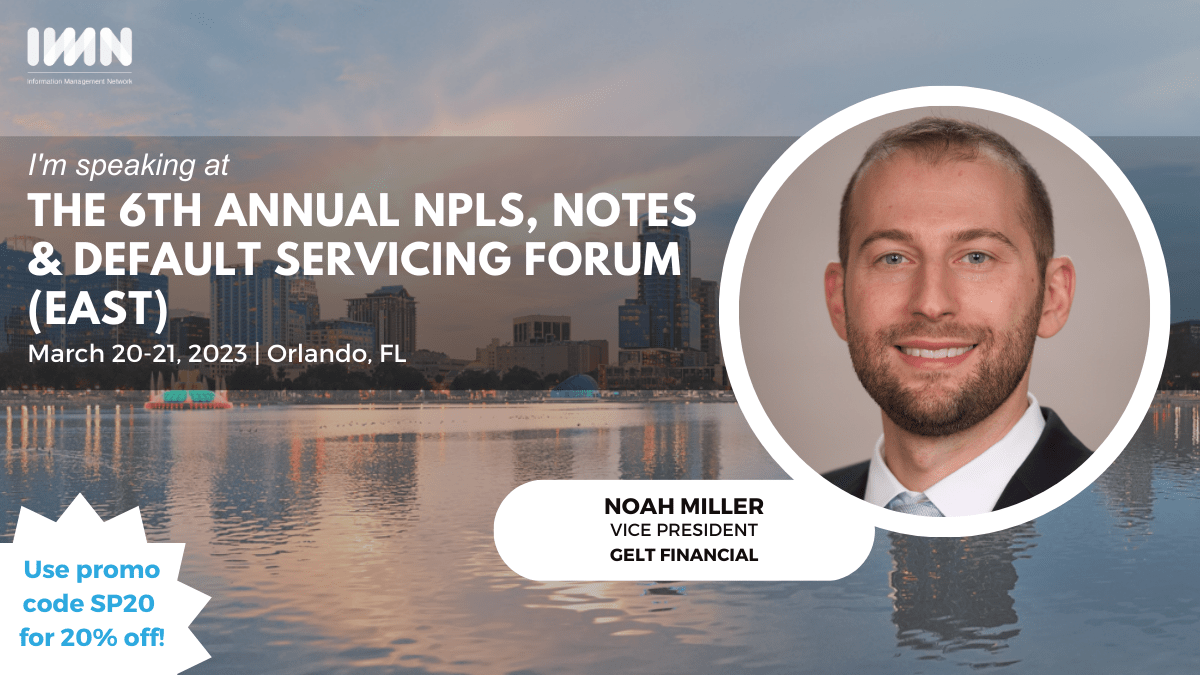What is a DSCR? (Debt Service Coverage Ratio). Why use it, and how is it calculated? Jack Miller of Gelt Financial LLC goes into the details and provides step-by-step detail.
“Hello, this is Jack Miller. I hope you’re having a fantastic day or evening, or whatever time you’re watching this. I decided to make this video and talk a little bit about what’s called a DSCR, which a lot of people don’t know what that stands for, but it’s debt service coverage ratio. This is often used initially by people when evaluating real estate and the cash flow of the real estate, as well as predominantly by lenders in evaluating the real estate and the cash flow of the real estate. Banks, CMBS lenders, life lenders use this all the time, as well as non-bank lenders. Our company, Gelt Financial, uses it all the time.
I’m going to, I hopefully, at the end of this, a lot of people don’t know how it’s calculated. I’m going to go into how it’s calculated and maybe just give a few things I’ve learned over the years. Some of its subjective, some of it’s not, but I believe that when in real estate investing, there are a lot of matrices to look at and a lot of financial matrices. There are a lot of people lose sight of the matrices and just focus on, so to speak, “Oh, they love the property and it’s a great investment,” or “The tenants don’t ask for them,” or whatever. But you always need to focus on the financial matrices as well as the emotion of it. Enforcing yourself to do a DSCR coverage ratio on your properties, even if your bank doesn’t require it, is, I think, a good tool, and it’ll help you understand them better. So, I highly recommend this for looking at properties upfront for self-understood for lenders to get a handle on the risk, but also for individual investors into understanding the real matrix of the property. So, with that, let’s jump to a very basic form that we use here at Gelt Financial, and you could soup it up and put all kinds of stuff in there, but I choose to choose a basic form just to give you the gist.
Now, I’m going to try to share my screen. Hopefully, this works. Okay, I hope I’m sharing this. I hope it works. So, let me blow it up. So, what we have is just a basic Excel spreadsheet, self-understood, a little self-promotion, our logo here. You can reach us anytime at geltfinancial.com, and it’s a debt service coverage ratio form. Again, this is a very basic one. So, the first has four— a couple components, but the first one is here, and I hope you’re seeing this. I really never recorded a zoom where I’m sharing my screen, but I hope it works, and I hope you can see my mouse cursor. If you can, you see here I just put “tenant 1” and paying $30 a foot, “tenant 2” paying the same $30, but you can see what you really should put in here, and you can change these numbers, and that’ll affect the numbers, the ratio they’re all tied to formulas but up here, up ultimately what you want to get at, you want to get at a gross income.
Now, it’s different— debt services are again used as a financial matrix most banks commonly used, you know let’s say a 120% coverage ratio which I’ll go into that in a minute, but you can go much lower if you have a better tenant. So, for example, if your tenant is McDonald’s or Apple, you know a grade A tenant or an AA plus tenant, you may be able to get away with the 110% debt service coverage ratio. If your debt ratio, if yours is, you know just a bunch of moms and pops it’s gonna be a lot higher. You’re gonna have to go to that 120.25%, so it’s just an example of the… I was gonna say, I’m sorry, the tenants have to do with the coverage ratio. You see in this example I’m coming up with one 158.25% which is an excellent debt service coverage ratio for just average tenants but let me keep going so you see ultimately you want to get to a total gross income. Now, a couple things here you have a vacancy factor. Now, even if your property is a hundred percent occupied, okay, a lender is still going to put in a vacancy factor. You could argue it’s 5%, you can argue it’s 10%, but you see you just change it, and you see before it was 5%, the DSCR is 158.25. A 10% is 146.85%, so you see the higher the expenses which lowers the net income which we’ll get to in a minute affects the debt service coverage ratio.
So you have you start off with the gross income, and again if the property is if this is in projection mode, for example, if it’s a value-add property let’s say it’s vacant now and you’re going to fix it up you want to do a current DSCR which may be nothing and a future DSCR so you can play with it in different formats but ultimately you see have—you need gross income you have to have an expense ratio then you have adjusted gross income which is simply a mathematical formula. It’s the gross minus the vacancy factor. Again, you can play around with the vacancy factor but again I would urge if you’re dealing with the lender be realistic in your vacancy factor. You know assume that tenants are gonna leave, don’t be, don’t trick yourself and more importantly don’t trick a lender and to think your tenants aren’t gonna leave or when they or they’re not gonna pay you, you do have tenants depending on the type of property that leave. If you have, for example, an apartment building, there’s turnover.
Now, again, if you have a triple net McDonald’s for 20 years, you may not have it. So, you have to be very cognizant of what the market rate, the vacancy is, and use those figures. Don’t think you’re gonna outperform the market. People very rarely outperform the market. A lot of people make that mistake thinking so. Again, you get to adjusted gross income. And here’s expenses so you see on this spreadsheet, the expenses are $175,040. And where does that go from? You see the formula over here, and I hope you’re following this on the zoom. I hope it’s picking up. You see here’s all the expenses, the real estate taxes, the insurance, all this other stuff. Again, if there’s other expenses, you just have to list it here. Put whatever— whatever the expense is, just type it here, put the number here, $5,000, and you see boom, that affects the expenses here, that affects expenses here, that affects the DSCR.
Again, with management, it’s subjective depending on the type of property. Again, if you have a single tenant with Donald’s or you’re leasing out to Apple or Tesla, you may have a much lower percent of management. But whatever you think is realistic, put that number here. Again, if you’re applying for a loan, be realistic. Even if you’re going to manage it yourself and you’re gonna say, “Oh, there’s no management expense,” a lender is gonna underwrite it with the management’s expense. So, my advice to you is put something in myself and just maybe make a note, go on a self-managed but underwriting with management expense. If there’s leasing costs, a turnover cost, you know LC and TI; leasing commissions and tenant improvements in all the space of retail, put a realistic figure and don’t make it unrealistic because if you do, the underwriter’s gonna lose, you’re gonna lose a little face. Be very realistic, and you should learn what the expenses are for this type of property. If you see down here, I put expenses per square foot because you could learn if you’re at, let’s say, in the office space or in the retail space or in the multifamily space, whatever space you are, each one of them has different expenses per square foot. You know, office may be $10, $8, $9 a square foot, retail may be a certain number. If it’s a camp property, that’ll be here, but you have to learn that. So, you see that goes down here, that goes to expenses.
So, we ultimately get to the adjusted gross income, and using this example, $615,600 minus the expenses of $180,040 leads to a net operating income of $435,560. Why that $435,560 is critical for a bunch of reasons? Because properties generally sell. This is made for DSCR, debt service coverage ratio numbers, and in this example, it’s 145.19%, which is a very good, strong, solid DSCR. But properties are sold. Most investment properties on cap rates. So, using that example, using a 6.50% cap rate, which is plugged in down here, you would see that the net operating income divided by the cap rate, it would imply a value of $6.7 million for this type of property. Again, properties sell for different cap rates, that’s another thing, but I just want you to follow the formula. Ultimately, so we’re up to the net operating income, you see that. Now we have the interest payment. Okay, so how did I turn the interest payment, for examples here and this is just for an example I use let’s say it was a $3 million loan at a 10% rate, the annual payments $300,000. So, that follows through over here, is a formula. So, you see here what the debt DSCR, and this is really the meat of the whole thing. The DSCR is this $435,560 divided by this $300,000. So, really the income is baked in, the expenses are baked in, the interest is baked in. So, for example, if we just change this $3 million to $4 million up, you see the DSCR is a little bit low using these examples, but maybe it’s $3.5 million, whatever it is, you can play with the number.
So, here, this loan using these numbers, which are purely made up, not factual at all, but you see the DSCR really supports. If you’re using 125% and a $3.5 million dollar loan, again, I just put in a 10% to use a number. So again, the DSCR is a mathematical formula that a lender or an investor or an owner can measure the cash flow of the property, you see here, and you see it, which also shows net cash flow, which is the available free cash flow, the NOI after the debt service. And again, you see down here based on the cap rate value we just have on our spreadsheet, you know what I’m gonna put this up on the website again if you go to Gelt Financial doc forms, you’ll be up, give me a couple days or a week, you could be—you’ll be able to download it under our form section. Everyone should use this and play with them, use this example when evaluating properties. I also put down here if you see a bank loan because I know we’re at Gelt Financial are non-bank lenders, so quite often people are coming to us as a bridge, they buy a property, and you know they need to stabilize it and then they’ll take us out with a bank loan in the year or so.
So, we internally measures, say, “Okay, what’s going to be our rate? What’s gonna be the DSCR and our rate? But we want to make sure it’s sized up, and a bank’s going to refinance us out. Banks are lower than us.” So, just in this example, again, purely made-up numbers, I assumed a bank rate is 6%, and here’s a payment. The bank’s loan to value would be 52%, which is excellent, and the bank’s DSCR would be 207%, which is excellent. So, we sort of size it up, not only at Gelt Financial, not only for our underwriting but for the next step underwriting too. So, I hope this gave you a good basic idea of a DSCR, again, a debt service coverage ratio. You’ll often hear people talk about it and refer to it. I advise you really dig in and play with different scenarios with increasing expenses, decreasing expenses, increasing rent, decreasing rent, things of that nature, vacancy, and it’ll give you a good handle on it.
So, I hope you like this video. We’re gonna keep posting more of these videos. So far, they’ve been good. I kind of feel like tonight’s was a little rambled, but debt service is a little bit of a complicated issue. I covered a lot of stuff in this. Play it a few times if you have any questions, reach out to us at Gelt Financial. Even though we’re lenders, we would really love real estate, and we like—we’re excited about it and passionate about it, and we want people to be passionate about it too. So, check us out anytime at geltfinancial.com. Remember, “When your bank says no, we say yes”. Don’t forget to like the YouTube, like the video, like our channel, just like your neighbor, like your spouse, like everything. Have a great day, and I’ll stop sharing, and that’s it. Have a great day and thank you very much. Take care.”
Category: Education
























